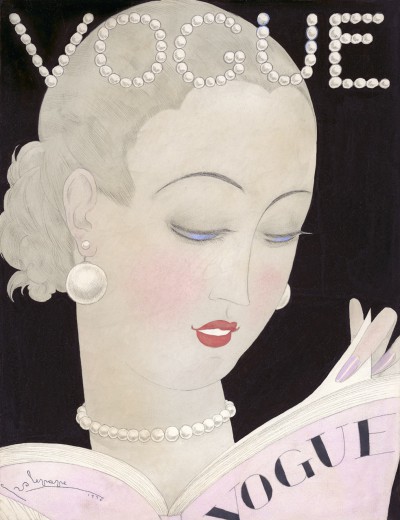
Georges Lepape
About
Georges Lepape was born in Paris, France in 1887. He initially studied as an apprentice at the ateliers of Humbert and Cormon. He attended the Ecole des Beaux Arts in Paris from 1908 to 1910, where his companions included George Barbier and his cousin Pierre Brissaud, as well as Monvel, Besnard, Paul Iribe and George Martin. They all became famous illustrators later on, all of whom you will find in our illustrators section.
In 1909 Georges married a girl named Gabrielle Lauzanne. The same year he met Paul Poiret.
In 1909, he began working for Paul Poiret and in 1911 he illustrated Poiret's famous brochure, Les Choses de Paul Poiret". In 1912, he moved to Jean Patou, to illustrate his collections. He also started illustrating for the Paris fashion magazine Gazette du Bon Ton published by Lucien Vogel. Georges remained working for Vogel till 1925.
Lepape also worked freelance for many magazines including the Gazette du Bon Ton, Femina, Vogue, Harper's Bazaar and Les Feuillets d'Art.
In 1916 Conde Nast, the American publisher of Vogue, commisioned him to do the first cover for their UK edition.
After seeing his work, and publishing some of it in US Vogue also, Nast went to Paris around 1920 and brought over to Vogue a group of artists who had been contributing to the Gazette du Bon Ton, a magazine which he had taken over from Vogel. Lepape was one of these.
In 1922 Vogue did a spread showing the exploits of 6 Parisiennes, the illustrations for which Nast spread out to 6 of his illustrators. Lepape was given a gay, romantic, hedonistic girl named Francoise with only her white elephant charm for a pet.
Lepape sets off this story with a splash of rich and subtle colour, and shows his Francoise resplendent in her box at the opera in Cheruit's low-necked gown.
Conde Nast was quick to give Lepape the prominence of the Vogue cover.
Lepape was one of the dominant presences at Vogue till the mid-30's. In the book "Fashion Drawing in Vogue" it is mentioned "Georges Lepape, star designer of Vogue covers throughout the 20's, ever as delicate, witty and stylish as he was inventive, did surprisingly little illustration inside the magazine.
His contributions to Vogue, Harpers Bazaar, Femina, House and Garden, l'Illustration and Vu continued till the fifties.
Georges Lepape died in 1971 at the age of 84.
The Look
He was strongly influenced by orientalism and the Ballets Russes. His work showed a distinctive curvilinear style. He was better known than many other illustrators of the period, chiefly through his designs of posters and books as well as his work as a printmaker. As you can see Lepape had a very colourful and witty style. His lady of the twenties with the short hair. The hairstyle towering above the face on the right, makes one think of a Christmas tree.